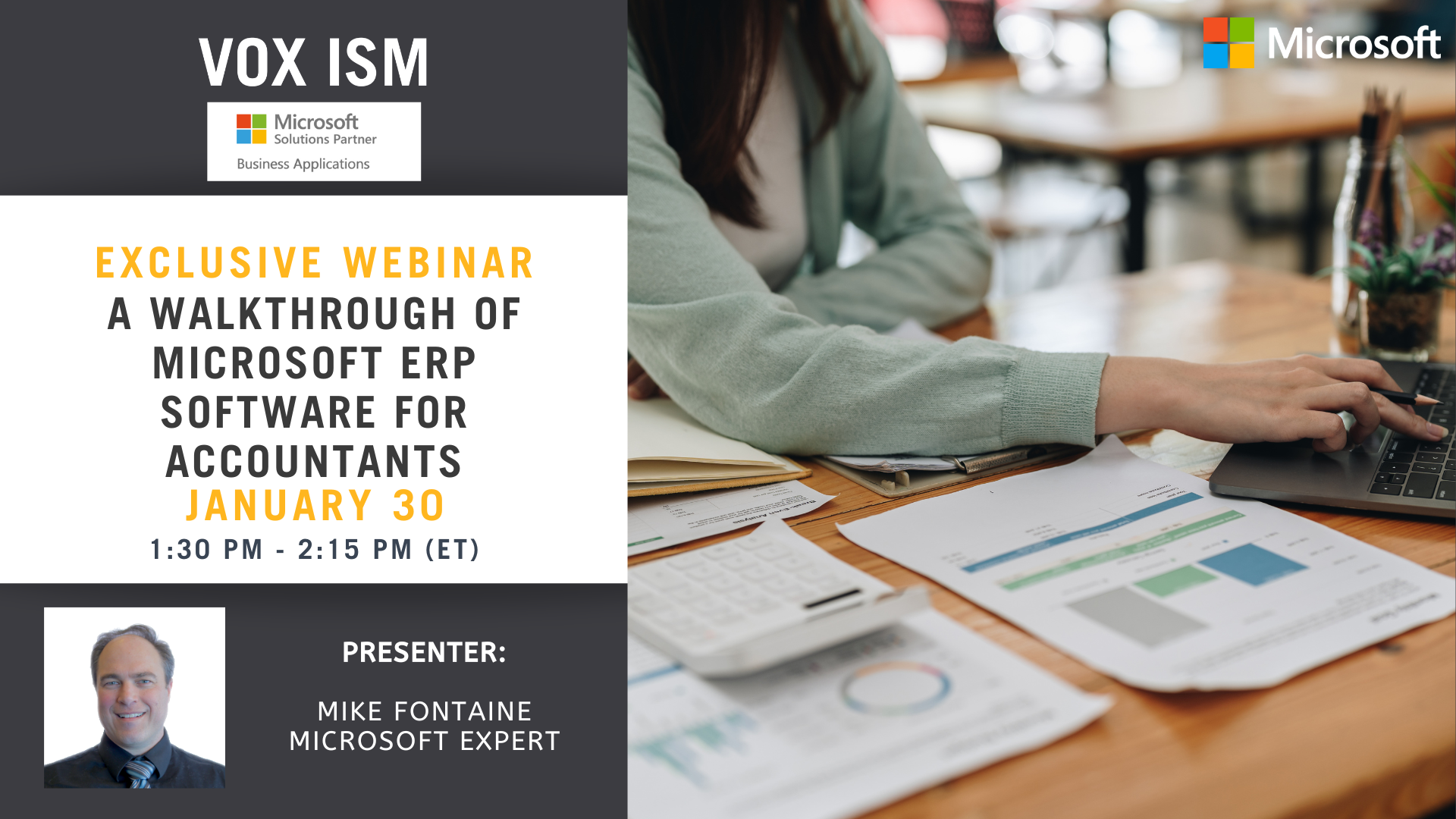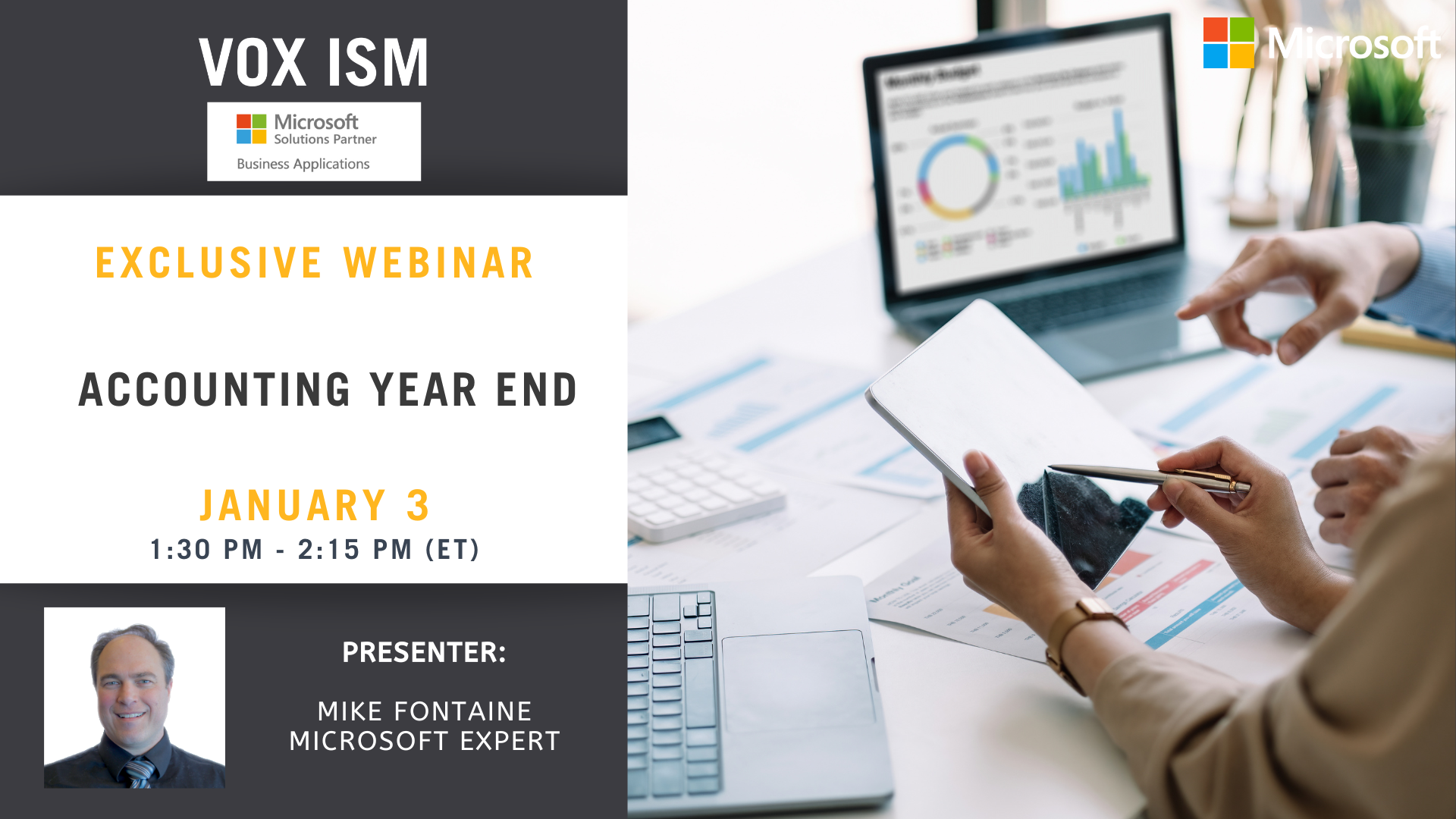Microsoft Software for Canadian Business in 2024
Introduction:
- Brief welcome and overview of the webinar’s focus on Microsoft Copilot, Power BI, and Microsoft Business Central.
- Quick outline of how these tools are shaping Canadian business landscapes in 2024.
Microsoft Copilot: Enhancing Business Operations with AI
- Overview of Microsoft Copilot’s features and its role in modern business environments.
- Discussing the benefits and innovative uses of Copilot in Canadian businesses.
Power BI: Transforming Data into Business Insights
- Introduction to Power BI and its capabilities in data analysis and visualization.
- Exploring how Power BI drives decision-making and strategy development in various industries.
Microsoft Business Central: Streamlining Business Management
- Discussing the comprehensive features of Microsoft Business Central.
- How Business Central integrates with other Microsoft tools to provide a unified business management solution.
Combining Microsoft Tools for Maximum Efficiency
- Strategies for integrating Copilot, Power BI, and Business Central.
- Real-world examples of Canadian businesses successfully utilizing these tools.
11 Excel Secrets for Accountants
Agenda:
• Exporting from Business Central
• Exporting from Business Central– using filters
• Sorting and Subtotaling
• Including from table to a range
• Nested Subtotals
• Pivot tables
• Pivot table settings
• Slicers
• Pivot table calculated fields
• Vertical Lookup
• Data validation
• What if
• Auditing
• Export update, Refresh & Publish data in Business Central
• Power BI – the next generation
A Walkthrough of Microsoft ERP Software for Accountants
Join us for a walkthrough of Microsoft’s next-generation ERP solution: Business Central in the cloud. We will walk you through a transactional (click-by-click) flow of the most common functions for a typical Canadian manufacturing or distribution business. This webinar will showcase the functionality of the new system and the usability of the application. We have broken down the flow by departments from start to finish to show you how tightly the system is integrated; it all works together.
Agenda
1. Quote to Cash
2. Procure to Pay
3. Manufacturing
4. Supply Chain
5. Inventory Control
6. Accounting
7. Integration with Microsoft 365 (formerly Office 365) products: Power BI, TEAMS, AI, and Workflows
This webinar is full of value and detail for new users and executives to see Dynamics 365 Business Central’s full potential.
From Insight to Action, Leveraging Microsoft Business Central for Strategic Decision Making
- Introduction
- Welcome and Introduction by the Host
- Brief Overview of Microsoft Business Central
- Objectives of the Webinar
- Understanding Microsoft Business Central
- Key Features and Capabilities
- How Business Central Integrates with Other Microsoft Tools
- Case Studies: Success Stories of Business Central Implementation
- Deep Dive into Data Analysis and Reporting
- Tools for Data Analysis in Business Central
- Customizing Reports for Strategic Insights
- Interactive Demo: Creating Reports and Dashboards
- Strategic Decision Making with Business Central
- Leveraging Data for Strategic Planning
- Scenario Analysis and Forecasting
- Best Practices for Data-Driven Decision Making
- Integrating Business Central with Your Business Processes
- Integration with Sales, Marketing, and Operations
- Automating Workflows for Efficiency
- Tips for Smooth Implementation
Tools to help you be a D365 Super System Admin
Agenda:
1. Basic Information
• a. Applications
• b. User Permissions
• c. Workflows
• d. User Options
• e. User Settings
• f. User preferences
2. Administrative Functions
• a. Global Applications
• b. Assigning licenses
• c. Security
• d. Backups/Restore
• e. Password Management
3. Support
• a. Training Agendas
• b. Quick Start Guides
• c. Checklists
• d. How to articles
• e. Videos and Links to the best blogs and community support
• f. Resources
How to use AI: Supply Chain
Introduction
o Welcome and Overview of Business Central Supply Chain Modules
o Exploring the Potential of AI in Supply Chain Management
Session 1: Overview of AI in Business Central
o Understanding AI Capabilities in Business Central
o Review of AI’s Impact on Supply Chain Processes
Session 2: Demand Forecasting
o Leveraging AI for Accurate Demand Forecasting
o Integrating Forecasting Insights with Inventory Management
Session 3: Intelligent Inventory Management
o Using AI to Optimize Inventory Levels
o Reducing Carrying Costs and Enhancing Availability
Session 4: Predictive Maintenance for Supply Chain Assets
o Implementing AI-Driven Predictive Maintenance
o Maximizing Asset Reliability and Performance
Session 5: Vendor Management and Procurement
o Utilizing AI to Enhance Supplier Relationships
o Ensuring Optimal Procurement Strategies with AI Insights
Session 6: Anomaly Detection and Risk Management
o Employing AI to Identify and Mitigate Risks
o Ensuring Supply Chain Resilience with AI-driven Insights
Session 7: Real-Time Data Analysis and Reporting
o Utilizing AI-Powered Analytics for Data-Driven Decision Making
o Gaining Actionable Insights for Continuous Improvement
Implementing AI in Supply Chain Management with Business Central revolutionizes traditional operations, turning challenges into opportunities for growth and efficiency. AI enhances demand forecasting, inventory management, asset maintenance, and risk management, contributing to a resilient, agile, and optimized supply chain. By harnessing AI’s power, businesses can make data-driven decisions, improve operational efficiency, reduce costs, and elevate customer satisfaction, driving sustained growth and competitive advantage in the marketplace.
Excel with Excel
What you’ll learn:
• Sorting data
• Removing Duplicates
• Data Validation
• Math Functions
• Freeze Panes
• Working with Dates
• Search and Replace
• Formulas – IF, TRIM, LEFT, MID, SEARCH
• VLookup
• Pivot Tables, Charts and Graphs
• Working with ERP – Budgets, add/modify/delete
Scheduling your Shop Floor
Agenda
Objective of Efficient Shop Floor Scheduling
Session 1: Overview of Business Central’s Graphical Scheduler
o Introduction to Graphical Scheduler in Business Central
o Key Features and Benefits
Session 2: Setting Up the Graphical Scheduler
o Configuration and Customization
o Defining Work Centers and Machine Centers
o Setting Up Routings and Production Orders
o Demo: Initial Setup of Graphical Scheduler
Session 3: Effective Shop Floor Scheduling
o Understanding Scheduling Parameters
o Prioritizing and Sequencing Jobs
o Resolving Scheduling Conflicts
o Demo: Creating and Modifying a Schedule
Session 4: Managing Production Orders
o Synchronizing Production Orders with Schedule
o Handling Changes and Unexpected Events
o Utilizing the ‘Job Queue’ and ‘Load Distribution’ Features
o Demo: Managing Production Orders in Real-Time
Session 5: Monitoring and Analysis with Graphical Scheduler
o Tracking Progress and Performance
o Analyzing Scheduling Efficiency
o Customizing the Scheduler View for Enhanced Analysis
o Demo: Monitoring and Analysis Tools
Session 6: Tips and Best Practices
o Ensuring Optimal Resource Allocation
o Managing Unplanned Interruptions
o Improving Scheduling Accuracy and Efficiency
Q&A and Troubleshooting
Leveraging Business Central’s Graphical Scheduler for shop floor scheduling optimizes the allocation of resources, ensures timely order fulfillment, and enhances production efficiency. It provides a visual and intuitive platform to plan, monitor, and manage production schedules seamlessly, allowing for quick adjustments and real-time insights, ultimately leading to increased productivity, reduced downtime, and improved customer satisfaction.
Accounting Year End
Agenda:
Objective of the Year-End Closing Process
Session 1: Understanding Year-End Closing in Business Central
o Importance of Year-End Closing
o Overview of Business Central’s Year-End Closing Process
Session 2: Pre-Closing Activities
o Checking Open Transactions
o Verifying Reports
o Reviewing the General Ledger
o Ensuring All Transactions are Posted
Session 3: Running the Year-End Close Process
o Detailed Step-by-Step Guide
o Addressing Common Issues
o Verifying Closing Entries
o Demo: Executing Year-End Close in Business Central
Session 4: Post-Closing Activities
o Confirming Closing Entries
o Reviewing Financial Statements
o Archiving and Backing up Data
o Checklist for Post-Closing Activities
Session 5: Tips and Best Practices
o Efficient and Accurate Year-End Close
o Utilizing Business Central Features for Year-End Closing
o Ensuring Compliance and Accuracy
Session 6: Q&A and Troubleshooting
o Addressing Queries from Participants
o Discussing Possible Challenges and Solutions
o Sharing Additional Resources and Support
Effectively utilizing Business Central for year-end closing streamlines the complex process, ensuring that it is completed efficiently, accurately, and in compliance with relevant regulations. This structured approach mitigates the risk of errors, enhances financial reporting accuracy, and helps in making informed business decisions for the upcoming fiscal year, ultimately contributing to the organization’s sustained growth and financial health.
Cycle Counting and Inventory Management
Overview:
Embark on a detailed exploration of managing cycle counting and physical count in Business Central. This insightful webinar provides a comprehensive guide to ensure you fully grasp and effectively use these essential inventory management features for optimal results.
Agenda:
—
I. Introduction to Inventory Counting in Business Central (10 minutes)
Overview of cycle counting and physical count
Significance in maintaining inventory accuracy
Insights into Business Central’s inventory counting features
—
II. Deep Dive into Cycle Counting (15 minutes)
Exploring Cycle Counting in Business Central
Definition and importance
Key features and functionalities
Setting Up Cycle Counting
Configuration steps
Assigning items and locations
Executing a Cycle Count
Procedures and best practices
Analyzing discrepancies and adjustments
—
III. Practical Tips for Effective Cycle Counting (20 minutes)
Scheduling and Planning for Cycle Counting
Strategies for setting frequency
Utilizing Business Central for scheduling
Using Business Central to Analyze Cycle Counting Results
Reviewing and interpreting results
Making informed decisions based on data
—
IV. Comprehensive Guide to Physical Count (15 minutes)
Understanding Physical Count in Business Central
Key concepts and procedures
Differentiating from cycle counting
Conducting a Physical Count
Preparation steps
Business Central tools for efficient physical counting
—
V. Best Practices for Physical Counting (20 minutes)
Planning and Organization for Physical Count
Effective strategies and tips
Utilizing Business Central for seamless operations
Reviewing and Adjusting Post Physical Count
Evaluating results
Handling discrepancies in Business Central
Case Study: Successful Inventory Management with Accurate Counting
—
VI. Q&A and Interactive Session (20 minutes)
Interactive Q&A Segment
Addressing attendee questions
Providing further explanations and insights
Discussion on Challenges and Solutions
Sharing common hurdles and practical solutions
Insights from industry experts
—
VII. Conclusion and Additional Resources (10 minutes)
Wrapping Up: Key Takeaways
Summarizing the essential points and actions
Reinforcing the value of accurate counting in inventory management
Guidance on Further Learning
Offering resources, tutorials, and documentation
Ensuring ongoing support and learning opportunities
—
Key Takeaways:
Develop a solid understanding of cycle counting and physical count in Business Central.
Learn practical tips and strategies for effective and efficient counting.
Understand the functionalities within Business Central that support inventory counting.
Engage with experts to resolve queries and gain deeper insights.
Equip yourself with the knowledge and skills to expertly manage cycle counting and physical count in Business Central, ensuring your inventory management is precise, efficient, and contributes positively to your business operations.










